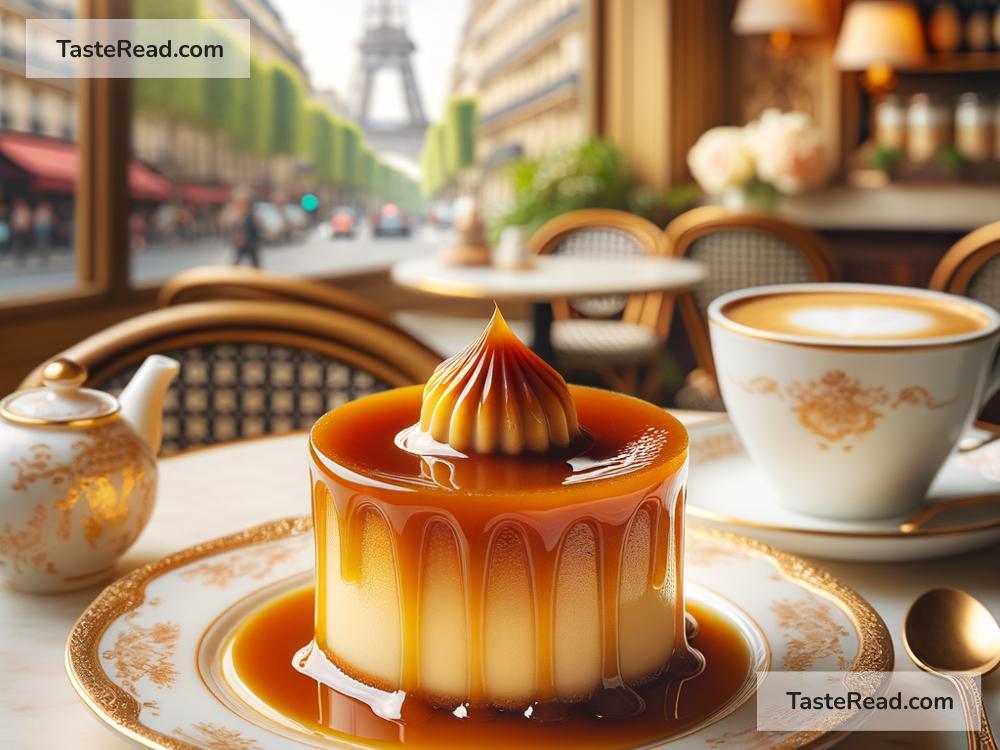Celebrating the Timeless Art of Crème Caramel Crafting in French Pâtisseries in Paris, France
When you think of Paris, your mind might conjure images of the Eiffel Tower, charming cobblestone streets, and, of course, delicious pastries. Among France’s many culinary treasures, one dessert has quietly captured the hearts of food lovers for generations: crème caramel. This silky custard, topped with a rich layer of golden caramel, is a fine example of French pâtisserie craftsmanship. Though it may seem humble compared to fancier confections, crème caramel holds a timeless place in the kitchen and on menus across Paris.
The History Behind Crème Caramel
Crème caramel has roots stretching back centuries. French chefs mastered its preparation in the 17th century, drawing inspiration from earlier flan-like desserts enjoyed in Europe. Over time, crème caramel became a signature dish of French pâtisserie. Its appeal lies in its simplicity: a few basic ingredients—milk, eggs, sugar, and vanilla—come together to create something truly special.
In Paris, crème caramel earned a reputation as a democratic treat—it could be found in high-end restaurants as well as family kitchens. Unlike intricate pastries requiring hours of decoration, this dessert focuses on technique and flavor. Crafting the perfect crème caramel requires balance, precision, and a deep respect for tradition.
The Art of Making Crème Caramel
What makes crème caramel extraordinary is its attention to detail. The dessert begins with caramel, made by carefully melting sugar until it turns a deep amber shade. The caramel is then poured into a baking dish or ramekin, creating that signature glossy layer at the base.
Next comes the custard. This mixture usually combines fresh milk, eggs, sugar, and vanilla. The ingredients are whisked together and poured over the hardened caramel. Achieving the silky texture of crème caramel is a true test of skill. It mustn’t develop cracks or bubbles during baking. To avoid this, the custard is baked slowly in a water bath, a method that ensures even cooking and preserves its creamy consistency.
Once baked and cooled, the crème caramel is inverted onto a plate, revealing the beautiful caramel against the soft custard. The way the custard gently jiggles when served is part of its irresistible charm.
Crème Caramel in Parisian Pâtisseries
Paris, with its rich culinary history, is a city where crème caramel thrives. In the bustling streets of Saint-Germain-des-Prés or the artistic corners of Montmartre, pâtisseries offer this classic dessert alongside more modern creations. Despite its simplicity, crème caramel stands out as a reminder of France’s culinary roots and the enduring beauty of traditional recipes.
Some pâtisseries in Paris put their own spin on crème caramel. They might enhance the vanilla flavor with Tahitian or Madagascar vanilla beans or even pair it with a touch of citrus zest. Yet, no matter how they innovate, the soul of the dessert remains unchanged.
Visitors to Paris often stumble upon crème caramel in ways that feel serendipitous. It might be served after a relaxed bistro meal or spotted in the window of a tiny pâtisserie beckoning pedestrians to come inside. Eating this dessert in Paris is more than enjoying a treat; it’s an experience steeped in culture, care, and craftsmanship.
Why Crème Caramel Matters
Crème caramel epitomizes the strengths of French pastry-making: discipline, simplicity, and elegance. While it lacks the elaborate layers of mille-feuille or the playful whimsy of macarons, crème caramel reminds us that extraordinary food doesn’t always require fancy frills.
What makes crème caramel so charming is its universal appeal. It’s a dessert nearly everyone can enjoy—children love its mild sweetness, and adults appreciate its refined flavor profile. Whether served at a Michelin-starred restaurant or a modest café, crème caramel carries the same essence of warmth and delight.
Beyond its flavor, crème caramel reflects an important human truth: sometimes, the simplest things can be the most meaningful. Its existence in Parisian pâtisseries reminds us to appreciate classic recipes and the skilled hands that prepare them.
Tasting Crème Caramel in Paris
If you’re lucky enough to visit Paris, tasting crème caramel should be on your must-do list. Seek out traditional pâtisseries like La Pâtisserie des Rêves or Stohrer, among the oldest pastry shops in Paris. Stohrer, for example, is famous for its connection to French culinary history and consistently delivers classic desserts that take you back to another era.
Pair a serving of crème caramel with a cup of strong espresso or a glass of dessert wine for the perfect ending to your meal. Enjoying a thoughtfully made crème caramel in the ambiance of Paris is a magical experience—one that captures the spirit of French culture in every bite.
Bringing Paris Home
If you can’t make it to Paris, you can still celebrate this timeless dessert in your own kitchen. Crème caramel features easy-to-find ingredients, making it an accessible recipe to try. While mastering the water bath and caramel consistency may take practice, the process itself is a joy. You’ll not only learn to create a delicious dessert but also connect with the traditions of French pâtisserie.
In Conclusion
Crème caramel is more than just a dessert; it is a piece of culinary art that spans generations in Paris. Wrapped in the romance of French culture and craftsmanship, crème caramel offers a world of flavors in its simplest form. Whether you enjoy it in a bustling Parisian café or make it at home, you’ll find yourself celebrating not just the dish but the timeless artistry behind it. So next time you think of France, let crème caramel be part of your sweet Parisian dream.


